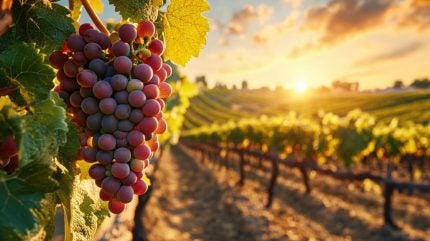
French wine production is expected to see volumes rise by 10% to 17% in 2025, according to an initial forecast from France’s ministerial statistical service for agriculture (Agreste).
Agreste’s estimate expects output from this year’s harvest to range between 40 and 42.5 million hectolitres, bringing production volumes broadly in line with the five-year average.

Discover B2B Marketing That Performs
Combine business intelligence and editorial excellence to reach engaged professionals across 36 leading media platforms.
The increase comes as winegrowers were supported by favourable weather conditions across key regions during the year.
This year so far, Agreste said “weather conditions were more favorable. The dry and warm start to summer helped limit disease pressure, and no major weather hazards are expected at this stage.”
The forecast, based on initial estimates as of 1 August, signals a recovery from the difficult 2024 harvest, when volumes were expected to have fallen by 18% to 39.3 million hectolitres.
The declines at the time were brought on by “unfavourable” climate conditions that had impacted vineyards, particularly in Beaujolais-Bourgogne, Jura, Charentes and Val de Loire.

US Tariffs are shifting - will you react or anticipate?
Don’t let policy changes catch you off guard. Stay proactive with real-time data and expert analysis.
By GlobalDataAgreste has lifted production expectations year-on-year, particularly for the Burgundy, Champagne, the Loire Valley, and Charentes regions.
The ministry’s agricultural statistical service also noted there was a “marked precocity” in harvests in many regions, including the Loire Valley and Champagne.
In Champagne, the absence of weather or health challenges means output is set to “significantly exceed” 2024 levels and approach the five-year average, Agreste said.
Burgundy is expected to rebound from last year’s mildew losses despite some hail damage, while the Loire Valley is benefiting from early ripening and healthy vineyards, with production predicted to surpass both 2024 levels and the five-year average.
In Charentes, the lack of climatic setbacks should enable recovery from the poor 2024 harvest.
However, production in Bordeaux, south-west France and Languedoc-Roussillon the increase is to be “partially offset” by a decline in production as a result of grubbing up schemes launched in 2023, which have already reduced vineyard area by more than 20,000ha since the last harvest, Agreste said.





